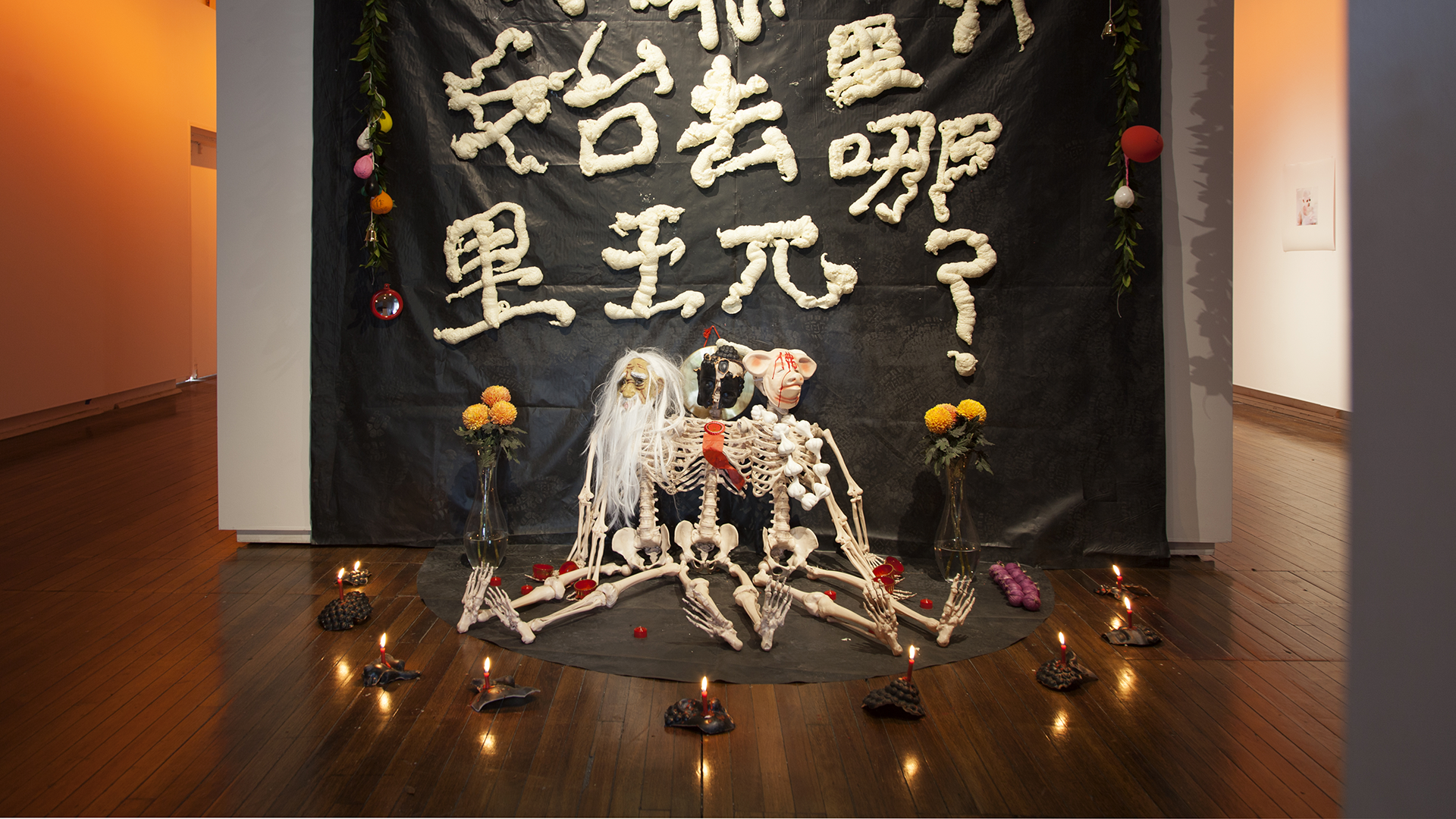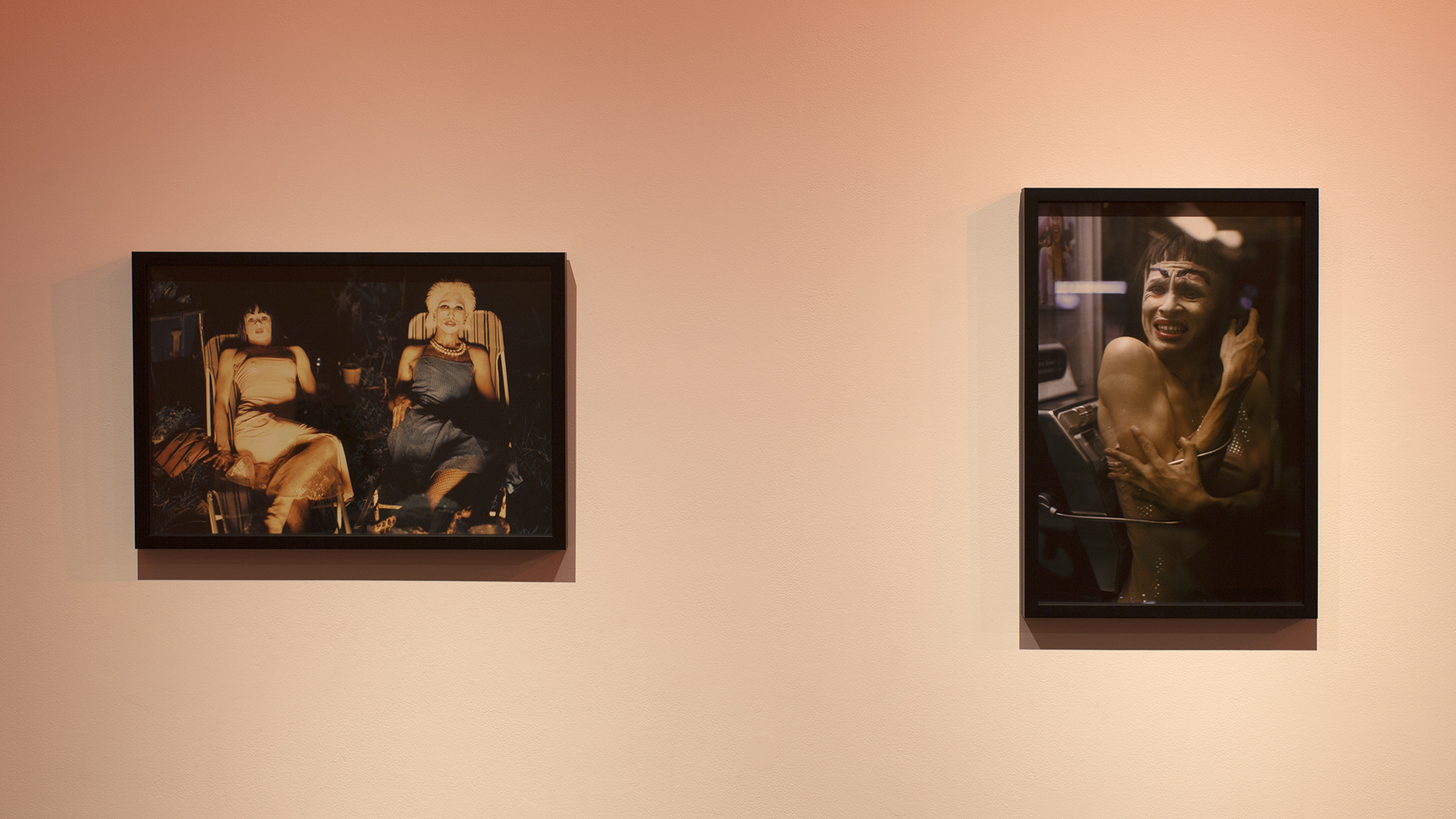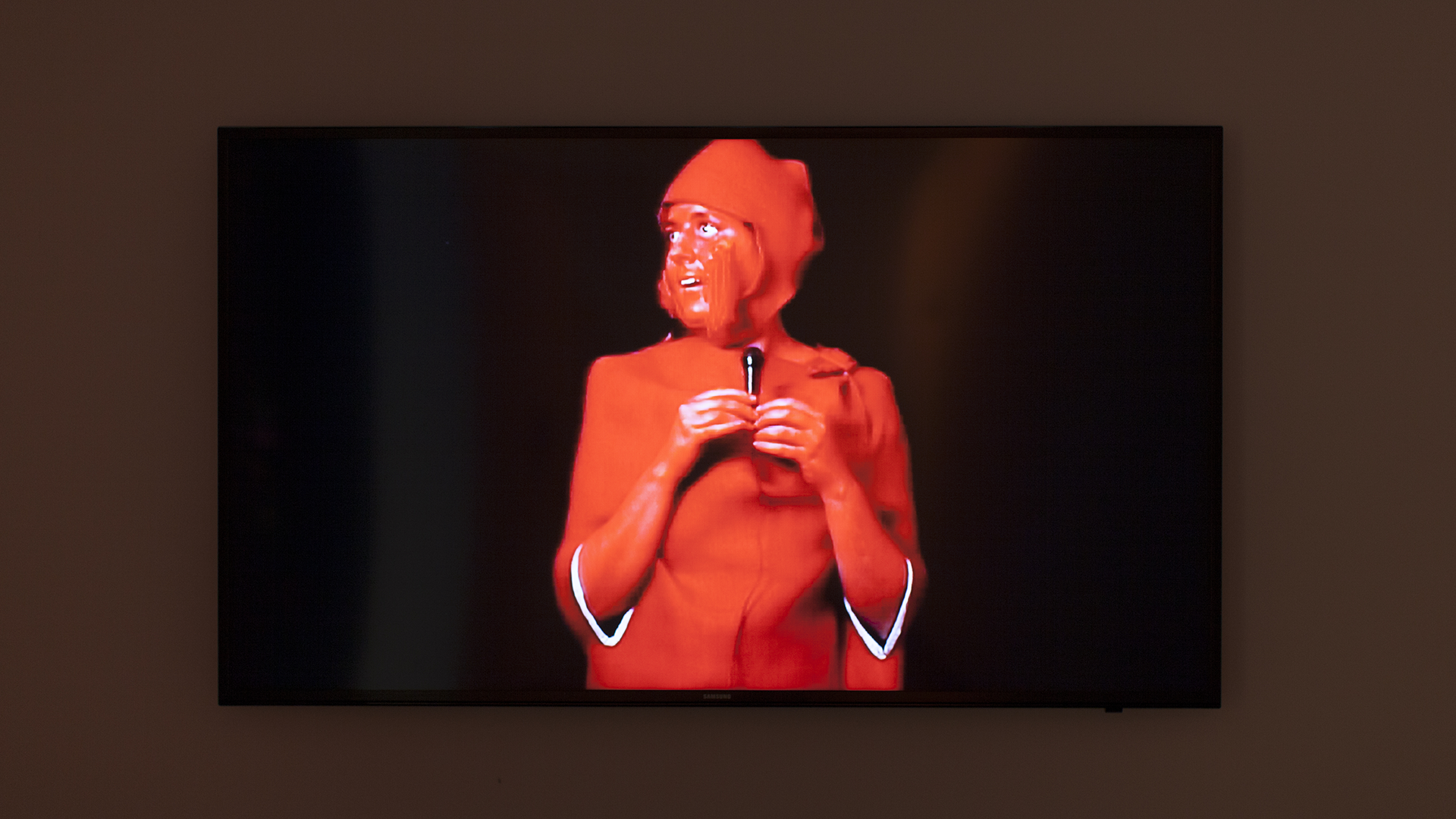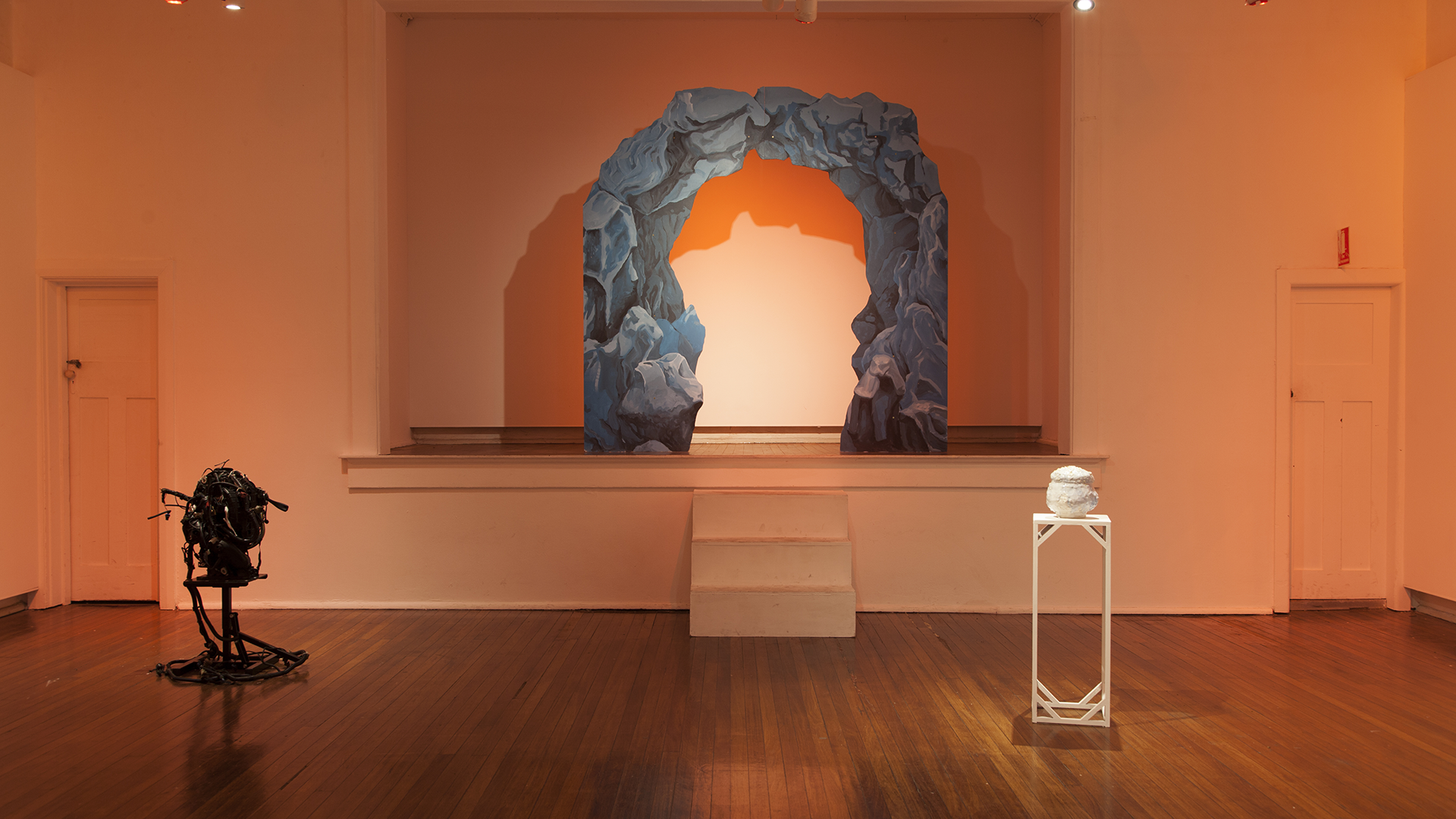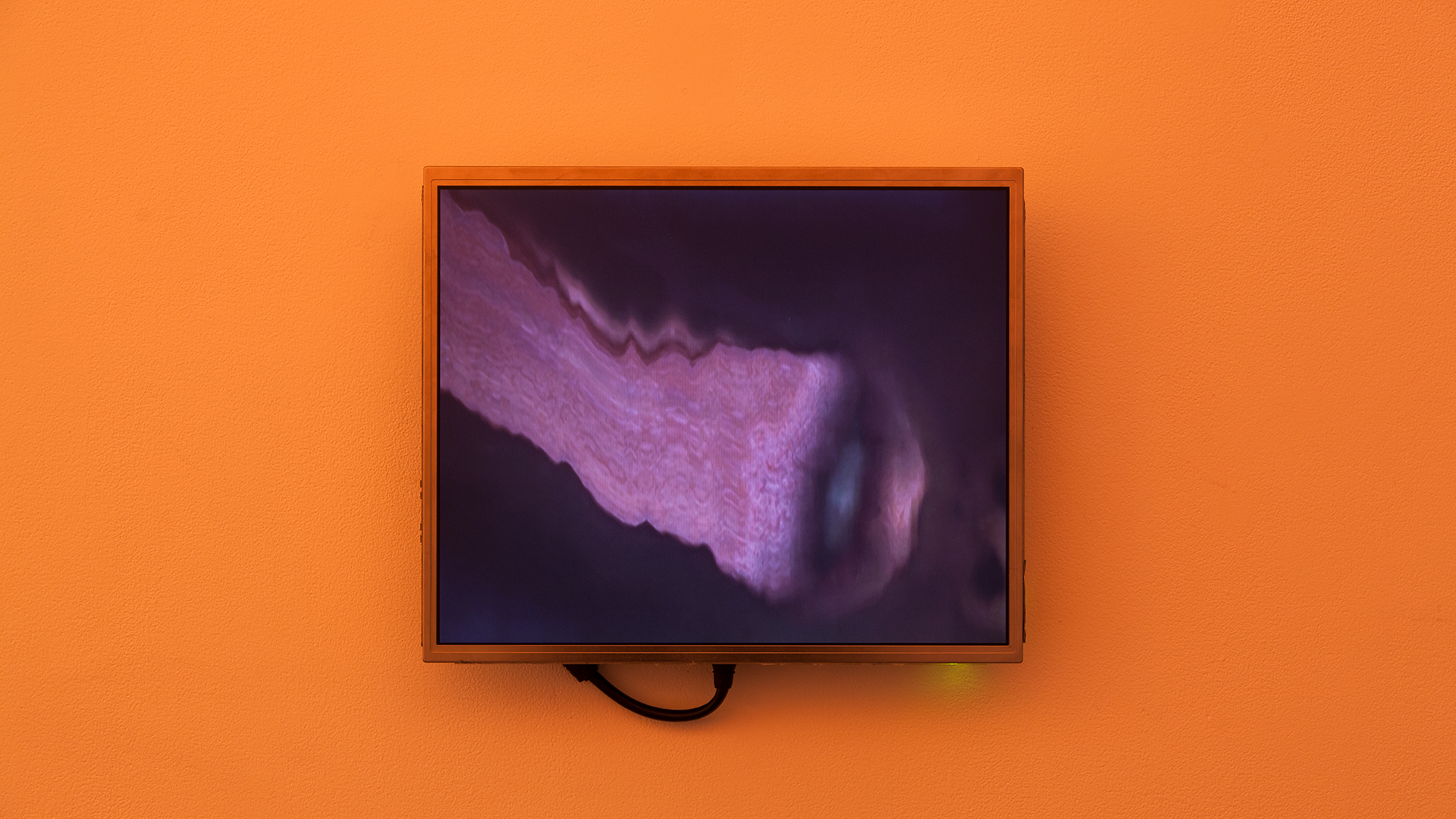Oh, it’s a horror show
Joshua Bentley, Jessica Bradford, Beth Dillon & Anton Benois, Loc Nguyen, Luke Ryan O'Connor, Katy B Plummer, Jason Phu, Brenton Alexander Smith, Meng-Yu YanCurated by Luke Letourneau & Louise Zhang
11 - 28 October 2017
Opening Night: Tuesday 10 October 2017, 5-7 PM
Oh, it’s a horror show is a group exhibition that brings together recent works by artists in the early stages of their careers. This exhibition will present bodies and forms that court parallels with the aesthetic stimulations of the campier side of the cinematic horror genre.
Oh, it’s a horror show revels in the ambiguity of morality; space and forms are not what they seem, what may feel dangerous and shocking can also seem oddly familiar, cute even. This show works through the genre of horror and camp to articulate alternative aesthetics for ideal bodies and characteristics. Monsters are celebrated, but they are also parodied and caricatured as a way of undercutting the mentality that there are ever going to be absolutes when it comes to what is right and normal when it comes to the body or how it expresses itself.
You'll see all kinds of bodies in this exhibition; fat ones, hairy ones, discolored ones and transforming ones. They are all in states of becoming and you will see them in all their stumbling and fumbling, awkward glory.
Image: (Clutches sun lounge, Supermoon rising), 2016
Interview with the curators
Naomi Segal and Tim Marvin discuss Oh, it’s a horror show with its curators Luke Letourneau and Louise Zhang
Naomi: What is this show about?
Luke: Basically, the show is presetting confabulations of horror and camp.
For us, the starting point was thinking about the tone of the third, forth or fifth sequel in a horror film franchise. These films always push the imagery and the scares to absurd extremes. They are also constantly trying to capitalise on the intellectual property so there is so much narrative reputation. And then they’re also trying to one-up what has come before and so it inevitably just becomes so so so over-the-top.
As an audience, you’re in-between laughing at the slap-dash clumsiness of what can so obviously feel like a blatant cash-grab from a film company. But then the films can be pretty self-aware so you’re also laughing with it. Because of the economics of the genre, these films are produced super quickly and often what was the villain becomes the central character of the franchise. To sustain an audience’s interest these villains are injected with more and more humanity and heart. They are villains but they are not normal and they do not behave like a films primary protagonist should but you begin to emote for them anyway. That transformative quality of this kind of campy horror is what we’re interested in. What we understand as the monstrous or the disturbing or the wrong way becomes more and more palatable, and maybe even recognisable.
Louise: We also love the residue of transformation. We want the maggots that drip off their body.
Luke: Is it in The Fly, where his face starts popping out? We’re also interested in the ‘popping out’ bits of The Fly. It doesn’t give you a static version of the body and what is normal, it gives you a body contradicting itself.
Louise: Horror is not one thing – that’s why there’s so many subgenres. Horror is so vague, it crosses so many cultures. I think it’s important to mention that horror isn’t just fantastical; it’s not simply reserved for movies, it exists in daily life.
Things like hairy legs, puss, gunk these can feel like the normal body distorted. Think about Loc’s work, it’s just a video of the body shot at unusual angles accompanied by a distorted sound. This is a work done in a simple way to create something horrific – it doesn’t require prosthetics or anything dramatic. It’s just sound and lighting. That itself is horror. Monsters are these fantastical beings that we think are really malevolent, but actually they exist in everyday life. They can exist in our mind, and sometimes they can fell like they exist on our own body. Rather than bringing the extremes of horror and non-horror, we are going for the in-between.
Luke: We’re both into the very theatrical.
Tim: How does this exhibition relate to your wider curatorial research?
Luke: For me, I guess this is more about having a conversation with a research area that is not my own, and not trying to make it my own...but seeing what ideas intersect.
Louise: I’m more interested in the fact that horror is a very popular genre, but it’s not popularly explored in the arts.
Naomi: it’s seen as superficial and kind of cheap.
Louise: As much as I love that part of horror, I do want horror to be interrogated a bit more. I think there is so much potential in the genre to be used by artists.
I think the genre is less about emotions and more about reactions - how horror can make us react and then draws us back in. A lot of the emotions are disgust, anxiety and desire. It pulls us in and spits us back out, but then you’re crawling out of the pile of spit like, “can I have a bit more?” It’s visceral and grey. It’s not here to please. It’s like, “I’m here to confuse you and draw you in but I want you to be repulsed but also to stay”.
